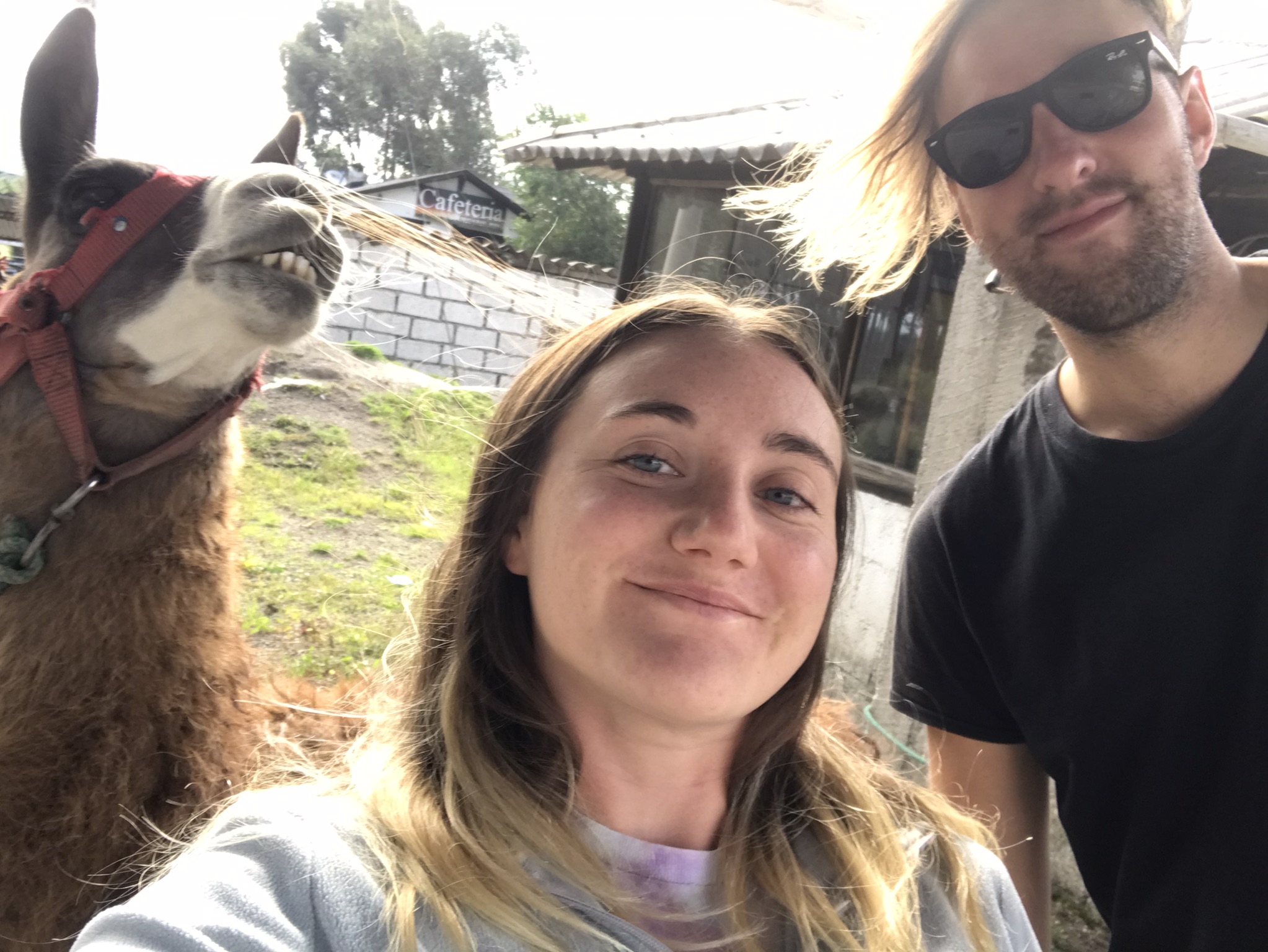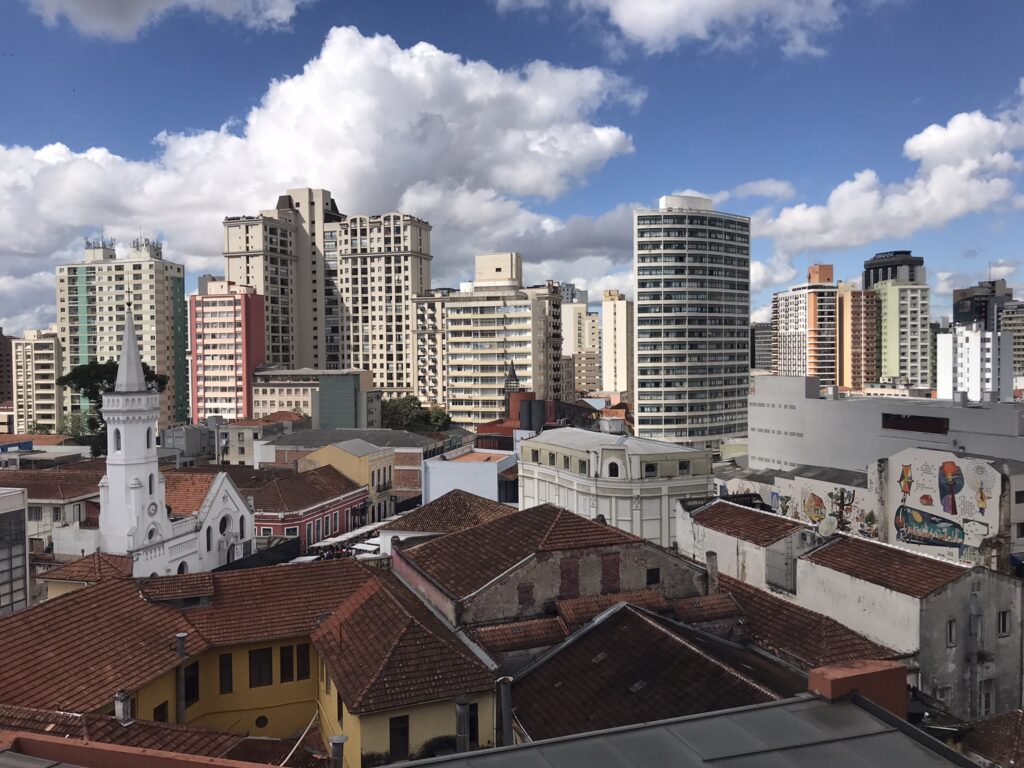
We usually rely on organised free walking tours or GPSmycity, however none of these options were available in Curitiba. Dan decided to create his own tour, the details are below.
All aboard Dan’s magical mystery tour of Curitiba!
This walking tour should take about 2 hours and covers most of the major sites in central Curitiba. After completing the tour you could grab something to eat or drink in Largo da Ordem or head to the Passeio Publico to check out the avian park.
1. Start the tour in Santos Andrade square (Praça Santos Andrade). This square contains some important cultural buildings of Curitiba, including the University of Parana and the Teatro Guaira. Look out for the bust of the Brazillan actress Lala Schneider in front of the theatre.
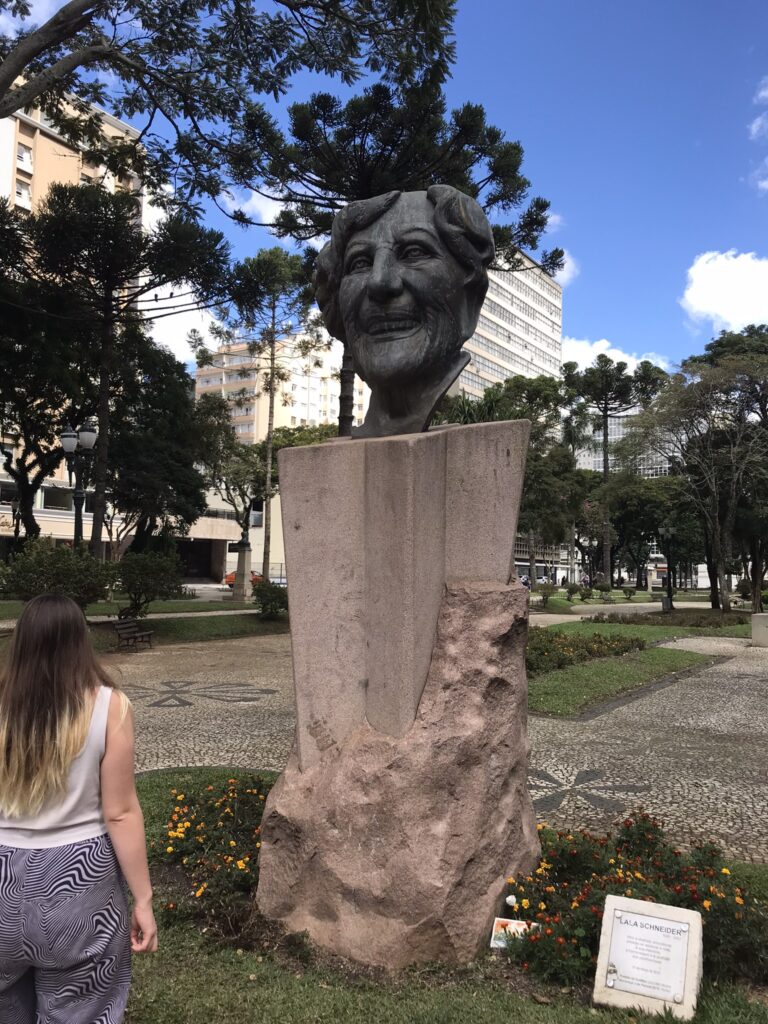
2. November XV street (Rua XV de Novembro) – also known as Rue de Flores, this pedestrianised street running from the south side of the University of Parana building in Praça Santos Andrade through to the Palácio Avenida is one of Curitiba’s most famous and notable streets. Look out for the petit-pavé pavement which contains patterns of seeds and flowers, giving the street its unofficial name. Rua XV de Novembro was Brazil’s first pedestrianised street and it is considered to be a major thoroughfare and the beating heart of the city centre, containing many historic buildings of different eras and styles. Head west along XV de November for a block, turning right at Rua Riachuelo to reach Praça Generoso Marques.
3. Praça Generoso Marques – this square is home to the Liberty Palace (Paço da Liberdade), the former city hall which is now a cultural centre, as well as many colourful art-nouveau style buildings and mansions including Casa Edith and Tigre Royal Palace. The square is one of the most picturesque in the city and played an important part in Curitiba’s history, first being a market square until 1913 and then becoming a political and finally a cultural space.
4. One block west from Praça Generoso Marques is Praça Tiradentes. This is considered Curitiba’s ‘ground zero’, the place where the city was said to have been founded in 1693. The square contains sculptures including a statue of Brazil’s hero Tiradentes, as well as a ceremonial marker for the city’s ground zero. This square is also the location of Curitiba’s monumental cathedral.
5. Heading north past the cathedral takes you to Largo da Ordem. This is the heart of Curitiba’s old town, containing numerous historical buildings including Casa Romario Martins, the city’s oldest house. Walking through Largo da Ordem and soaking up the culture is an essential experience in Curitiba, there are also plenty of restaurants and cafes here if you want to stop to get something to eat or drink. On Sundays, the area turns into a bustling crafts market.
6. Heading west on Largo da Ordem you will find the Memorial de Curitiba. This large, multi-story gallery and exhibition space is free to enter and is an interesting place to explore. The space contains various art installations as well as exhibitions and information on the culture and history of Curitiba and Parana state. At the top of the building is a rooftop terrace which provides views of the Curitiba skyline as well as an aerial view of Largo da Ordem below. Most of the information contained in the Memorial de Curitiba is in Portuguese only, so make sure to bring google translate or a Portuguese-speaking friend if you want the best experience here.
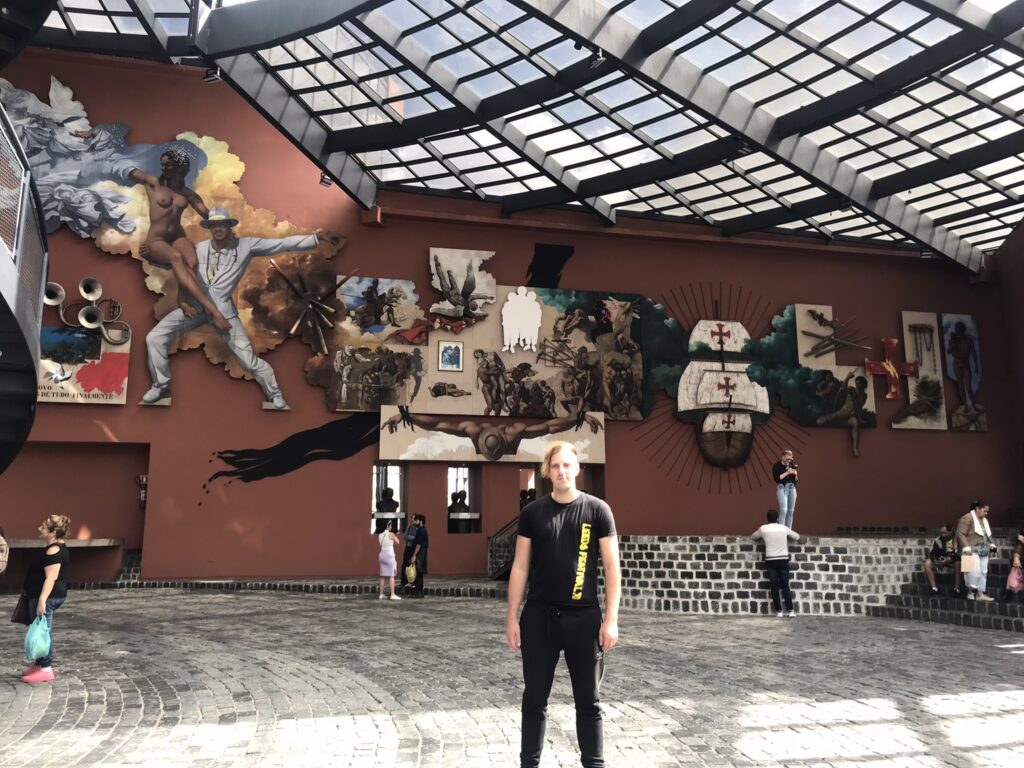
7. After leaving the Memorial de Curitiba, continue west along Rua Dr Claudino dos Santos to reach the Ireja do Rosario. This church was originally built in 1737 as a church for free and enslaved blacks, back then it was known as the church of São Benedito, the patron saint of African Americans. Check out the intricate tiling on the church’s facade – tiles from the original church were used in the modern façade when the church was rebuilt in the 1940s.
8. Directly opposite the Ireja do Rosario is the infamous Fonte da Memoria, more commonly known by locals as the Cavalo Babao or ‘drooling horse’. This bizarre fountain was inaugurated in 1995 and is a source of both pride and bemusement for local residents. Many myths and legends surround the fountain, with all sorts of stories and tales about various horses which may have inspired its creation. The official explanation is that it is simply a reference to the early days of the city when local ranchers and cattle drovers coming to trade in Curitiba would leave their horses tied up in the square.
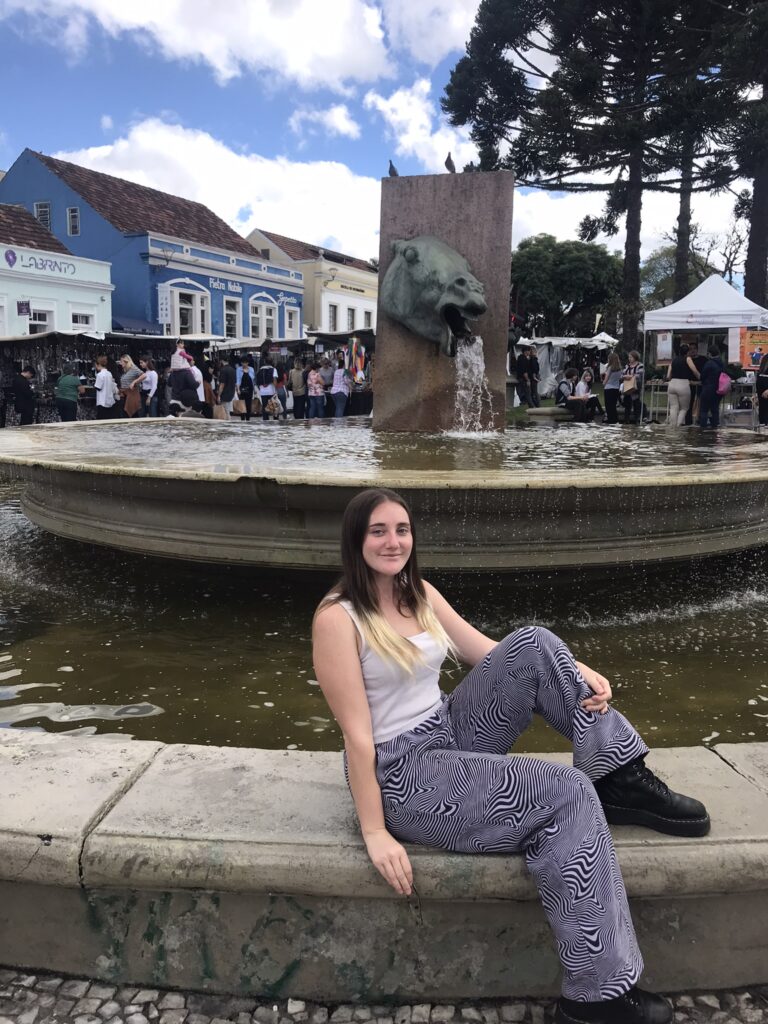
9. Heading further west on Av. Jaime Reis you will come to the San Francisco ruins. This was supposed to be the site of Curitiba’s most grand church, the church of São Francisco, which was commissioned in the late 1700s. However construction of the church was halted after only a few years when the landowner died before its completion, leaving the project unfinished. The ruins have remained standing ever since, later becoming a listed local heritage site and landmark for the city of Curitiba. At one point the grounds surrounding the unfinished church were used as a graveyard for local people who were considered ‘undesirables’, such as pagans and the homeless. This gave rise to a lot of myths and ghost stories surrounding the ruins, many of which persist to this day.
Finish! For more Brazil and Curitiba content click here!
This article is featured on GPSmyCity!
